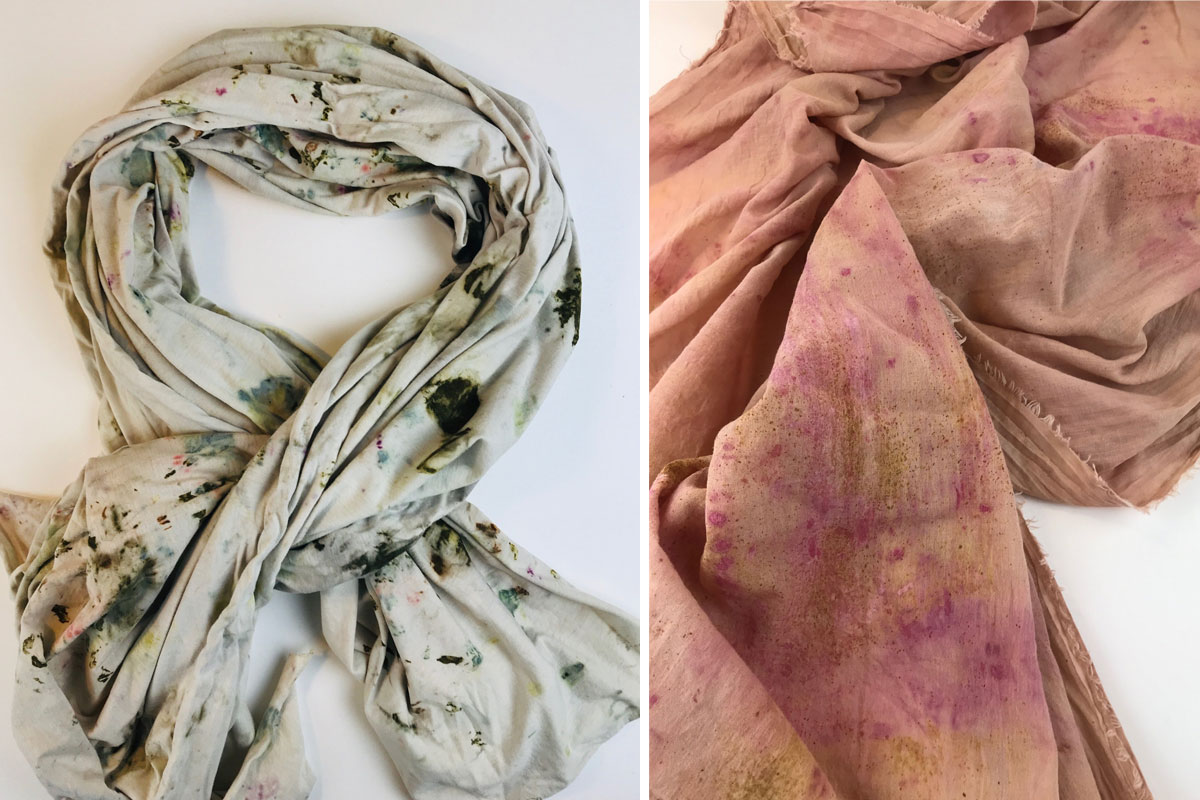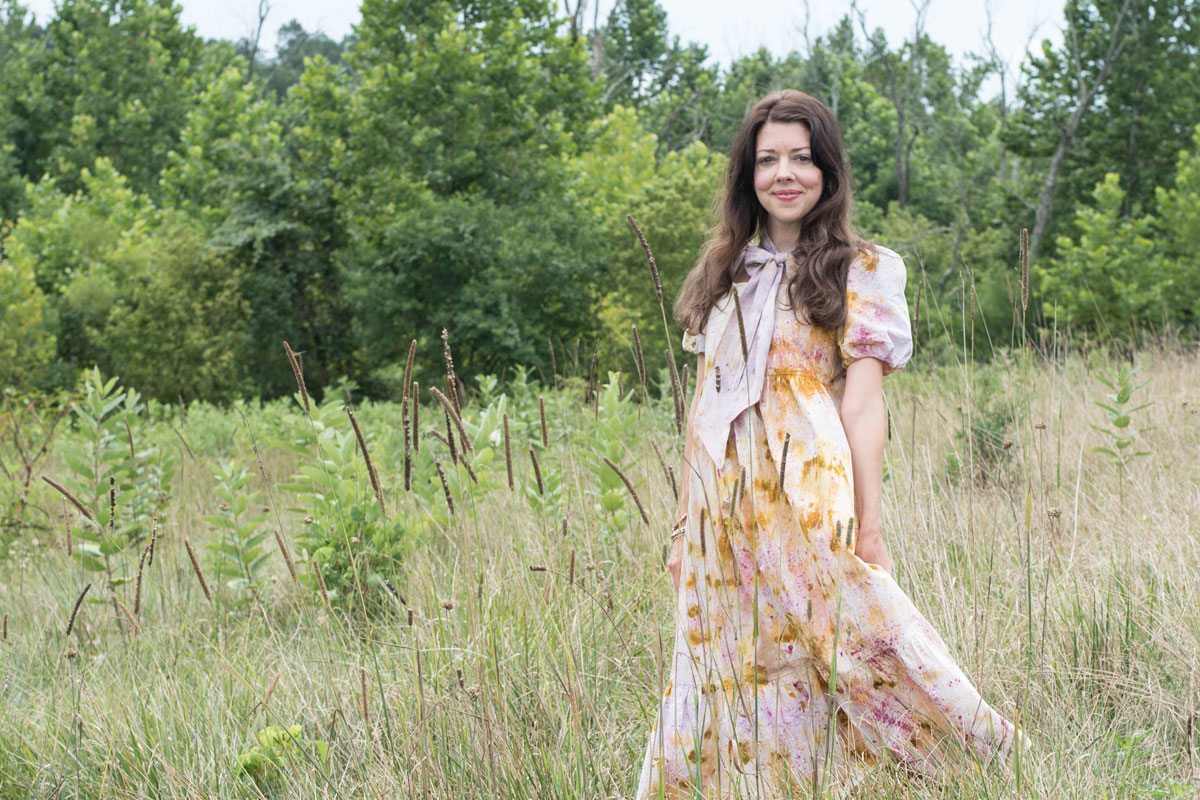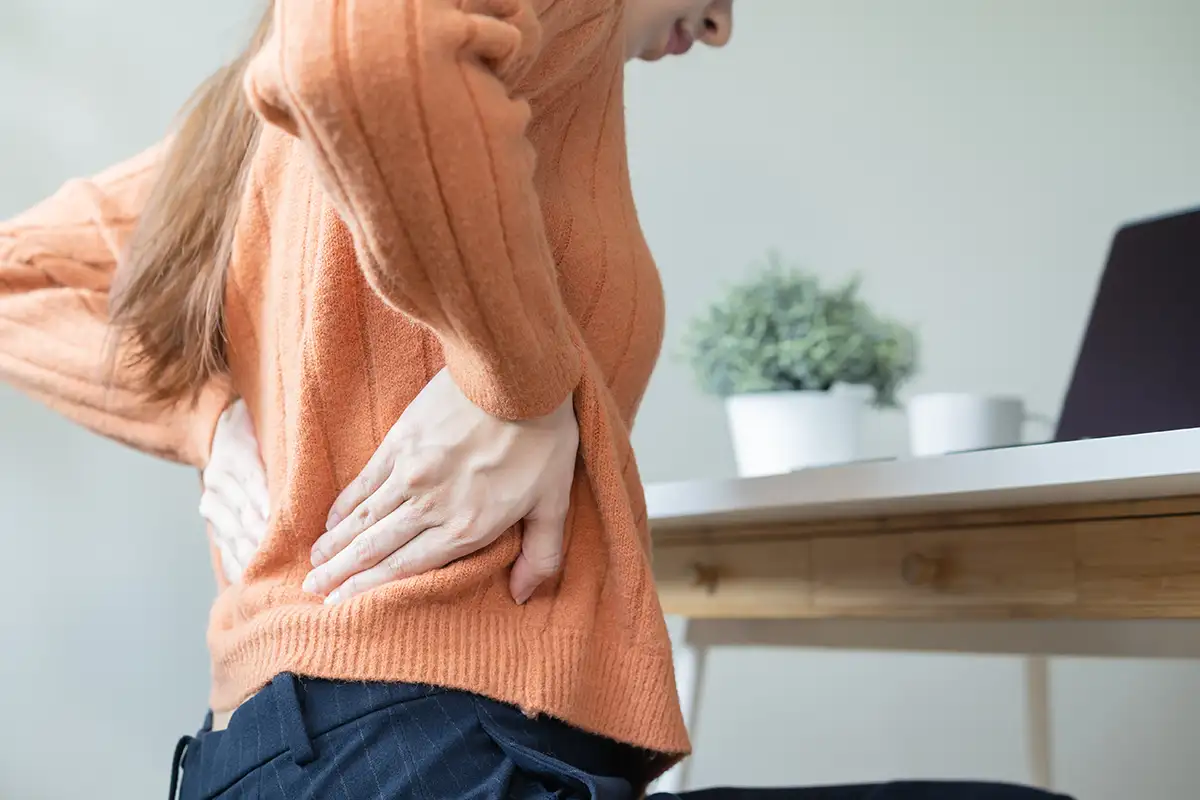If you happen to find yourself driving through Gainesville and see a brown-haired woman on the side of the road, walking amid the swaying grasses, there’s a chance it’s Amy Hindman. There’s also a strong possibility that she has her pruning shears in hand and is lovingly snipping flowers and collecting leaves that caught her eye while passing by in her own car. That’s because Hindman is always looking for nature’s gifts—the flora that she uses to dye the organic, healing scarves and textiles she started crafting after her battle with breast cancer.
She calls them Saint Virginia—but not only for the saint. “The name was a way to acknowledge where I am, where I grew up, the land where I’m living and the materials I use in my textiles,” says Alexandria-born Hindman, who is also a wife, mom, designer, writer and advocate. “I wanted to focus on a sense of place and story, and how that shapes us. That’s very much a part of everything I make.”
Indeed, each of her handmade products, with their soothing patterns and motifs, seems like a tribute to her journey, which began in late 2009. She was pregnant with her first daughter when she discovered a lump in her left breast. Her doctor said changes in breast tissue were common during pregnancy. So Hindman heeded her doctor’s advice and waited, eventually giving birth to Neville Jane (now 10), a happy, healthy baby. She asked her doctor about the lump again after her daughter was born. She had an ultrasound, but was advised to finish breastfeeding before doing anything else. Another few months went by. “[The lump] got bigger and started to hurt,” recalls Hindman. So she saw a breast surgeon in Warrenton, who also told her to wait. “But I didn’t want to wait anymore,” she says.
The resulting biopsy showed she had stage three triple negative breast cancer, an aggressive form that Hindman calls “sketchy.” She had to stop nursing as she embarked on treatment (including a PET scan, which includes radioactive chemicals that aren’t safe for nursing)—along with research that took her to Dr. Carolyn Hendricks in Bethesda, then on to Johns Hopkins, where she met with a radiologist and surgical oncologist. She had six rounds of chemotherapy (to shrink the tumor before surgery). And she started losing her hair after the first treatment.

Hindman tried a few scarves (she fell in love with them while in Paris as a teenager), but found them to be too scratchy, not warm enough or hard to keep on in the first place. “I didn’t feel comfortable,” she says. She relied on a wig, which she called Lola, instead. “[In hindsight,] I probably wouldn’t have worn a wig as much,” she says. “But I was very insecure. I wore one all the time.”
Her treatments continued—a phase-three clinical trial, a double mastectomy (she was considered high risk, so the right breast was removed as a preventive measure), surgery for expanders, radiation and implants. And, because she was at risk for ovarian cancer, she also had those organs removed.
But before the latter surgery, she and husband, Jon, had another baby—Beatrice (now 7), whom Hindman calls a miracle.
Another good sign: Hindman has been cancer free ever since. Yet the experience stayed with her. In 2015, she landed a grant with the American Society of Clinical Oncology in Alexandria, where she worked at the time (she now writes for the Association of Community Cancer Centers, based out of Rockville), to create organic cotton scarves. Specifically, she wanted to figure out how to make a “soft scarf for cancer treatment.” And, no, her mission wasn’t entirely out of her wheelhouse. Hindman has been sewing, knitting and crocheting her entire life—she sold handmade baby clothes on Etsy while she was pregnant.
She initially began crafting “big, gorgeous, crocheted scarves with tons of fringe,” though she wasn’t satisfied with organic cotton alone. She wanted natural dyes too. “Even though I could find organic cotton that was a natural color, once you get into pretty [hues,] you’re introducing synthetics again,” she says. “I didn’t feel good about it.”
A second grant in 2016 allowed her to take a workshop at Penland School of Craft in North Carolina. She learned how to dye silk with synthetic ingredients and made scarves for Duke Cancer Center—and discovered a natural-dye studio. “That cemented it for me,” says Hindman. She spent the next year experimenting (making “ugly things,” she says), and learning about the ancient technique. “The connection to the process itself was healing,” she recalls. “It was helping me see things in a different way, like driving down the street and looking for flowers, picking them and trying them. I was growing more in touch with the environment.” And she began creating “beautiful things.”
Saint Virginia was officially born in 2017. She uses madder root, a dye that’s been around for thousands of years from which she extracts reds and pinks, marigolds, and cochineal, a tiny beetle that feeds on prickly pear cacti, that makes pinks and purples. She harvests coreopsis—it’s native to Virginia and grows alongside her house—for surface design. There’s hollyhocks for shades of black, blue and purple; she uses the latter with goldenrod, foraged from around her neighborhood. Even Virginia black walnuts, from her parents’ home in Castleton, are put to good use as dyes on the fabrics, which she buys from an organic-cotton company based out of Connecticut.
So, how long does it take to make them? It can take about a week or so to prepare the cotton, immersion dye it (aka rolling it for seams and patterns, or using one particular dye), then bundle dye it, followed by cutting, sewing and ironing it. Each scarf, textile, table runner or table cloth is one-of-a-kind and made with heart in her home studio. And it’s become a family affair: She, her seamstress and mother sew the goods; her daughters also like to help—with the bundle dyeing, in particular.
Taken together, the products and the process behind them are naturally healing—part of the closed-loop process of life.
“My teacher at Penland once said that when you wear a textile, it becomes activated and takes on this new life. It is interwoven with a new story and born again,” she says. “From an environmental perspective, it’s waste-free and biodegradable, and can go back to the earth.”
Five percent of every sale benefits Facing Our Risk of Cancer Empowered (FORCE), which has a local chapter in DC; the organization provides resources for hereditary breast and ovarian cancers. But, perhaps most importantly, Hindman’s work touches people. She has repeat customers, many from around the country. And, while Saint Virginia is primarily available online, Hindman’s working with Pattern Sample Sew in DC to do a larger sewing run so she can hopefully have a presence in brick-and-mortar shops about town.
Does she stop there? No. She spends time helping her peers navigate breast cancer. She shares personal advice. Gives them hope. And you can bet she helps them find beauty where they can—maybe like she does, with those pruning shears, clipping flowers on the side of the road.
“Environment is everything, and there’s abundance and beauty in whatever space or place you find yourself in,” says Hindman. “Once you look, you’ll always find it.” // scarves from $148
This story originally appeared in our October print issue. For more stories like this, subscribe to our monthly magazine.




